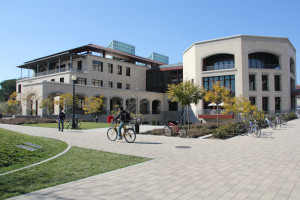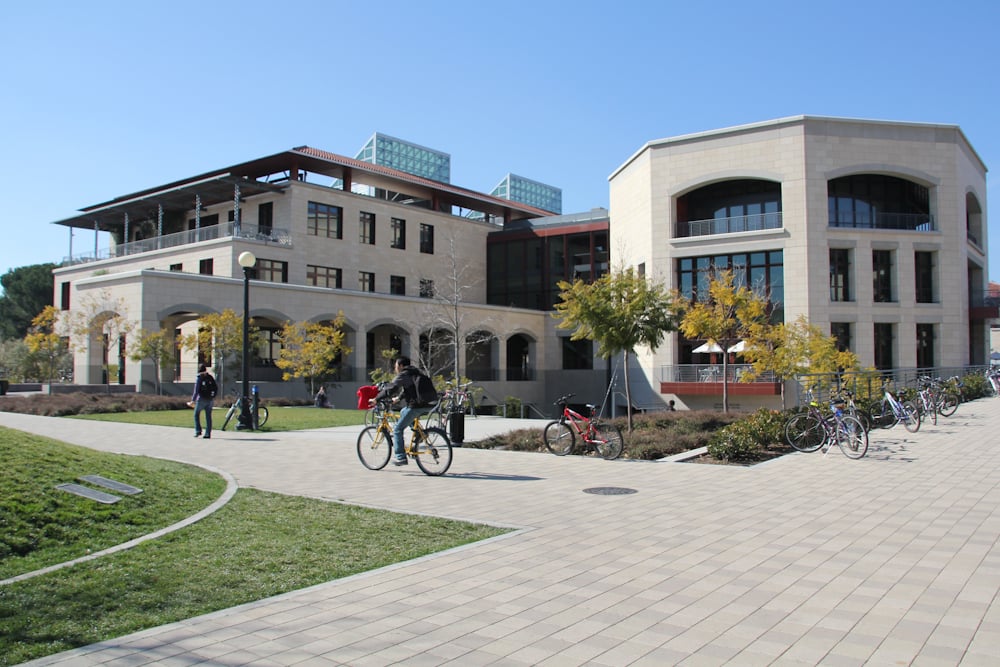
(AVI BAGLA/The Stanford Daily)
Eight Stanford professors were elected to the National Academy of Engineering (NAE) on Feb. 6, in recognition of their academic and professional accomplishments. Stanford’s eight elected members are the most of any university this year, bringing the University’s total faculty membership in the NAE to 80.
The Daily spoke with four of the eight professors — Charbel Farhat, professor of aeronautics and astronautics, Craig Bowman, professor of mechanical engineering, Curtis Frank, professor of chemical engineering and David Dill, professor of computer science — about their careers, their research and their election to the NAE.
The Stanford Daily (TSD): For what research were you elected to the NAE?
Charbel Farhat: It was for my work on fluid structure interaction and its application to aeronautics, naval and mechanical engineering
Craig Bowman: They cited for me for part of my research. The larger picture of my research is that I have been concerned with fossil fuel consumption and the environmental effects of that. So, they cited for me for some work that I did a number of years ago on sources and sinks of nitric and nitrous oxides from combustion systems.
Curtis Frank: I don’t recall exactly. It’s something like “for the elucidation of molecular organization ion polymers and other soft materials.” That’s actually a pretty good characterization of the majority of the 300 papers we’ve published. How are molecules — portions of molecules — interact within the same molecule and with other molecules?
David Dill (DD): The process is secret, but they have a one-sentence citation. It was for my work in formal verification of hardware, software and verification.
TSD: How does it feel to be elected to the NAE?
Charbel Farhat: It feels great the first day, and then you’re back to normal on the second day. As you saw when you came [to interview me], I was not exactly in celebration mode.
Craig Bowman: On the one hand, I obviously feel very honored. I am also somewhat humbled by this experience, because I know that there are a lot of good people out there. It’s really quite an honor to be picked from amongst them, but I also realize that there are some people out there who deserve to be in that aren’t yet in.
David Dill: It’s a major milestone. I consider it a significant honor, and I am very grateful to have received it.
TSD: What direction do you see your research taking in the future?
Curtis Frank: We have three project areas. One of them is a continuation of our interest in hydrogels, which are materials typically 60 percent to 90 percent water. Human tissue is 70 percent water. So, hydrogels are often considered as substitutes for various aspects of devices and tissue engineering. So, in that area, we are particularly interested in using our expertise in making polymer hydrogels, and we’re collaborating with the School of Medicine.
Craig Bowman: I do what I do and have always done what I do, because I think it is societally relevant. I have always used that as one of the metrics in guiding my research — I’ve done that since I have got out of graduate school. I may change the focus toward greenhouse gases. For example, say, are there things that will allow us to emit less CO2 for the amount of energy being released?
TSD: How has [being at] Stanford helped facilitate your research?
Curtis Frank: Stanford is a wonderful environment for interdisciplinary research. The ability to be able to get in contact with other faculty who are very talented who are thinking of things in a very different way — that’s what makes this place very special. With regards to my work with the departments of civil and environmental engineering, this [initiative] was started by students, who used my lab for two years. This is the great thing about Stanford: student initiative and the willingness of faculty to say, “Oh yeah, sure, you have to use it safely, but you can use my instrumentation.” A lot of good things come out of that attitude.
TSD: What advice would you have for Stanford students interested in STEM fields?
Charbel Farhat: Math and physics have a funny way of intimidating people. I really don’t think that they are [intimidating]. It’s more about taking the time and taking the interest. If you’re interested in it, you can really do it. I don’t think it’s much harder than other things — it’s just harder for people not interested.
This interview has been condensed and edited.
